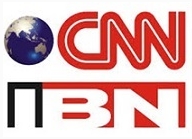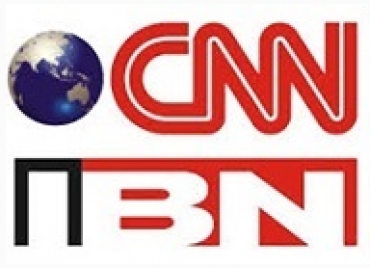
 An electoral survey conducted by CNN IBN/IBN7-Axis in Bihar gives a clear edge to the RJD-JDU-led “Mahagathbandhan”, riding home the assembly elections with 137 seats (+/-8 seats) and a 46 per cent vote share.
An electoral survey conducted by CNN IBN/IBN7-Axis in Bihar gives a clear edge to the RJD-JDU-led “Mahagathbandhan”, riding home the assembly elections with 137 seats (+/-8 seats) and a 46 per cent vote share.
The BJP-led NDA+ is expected to win 95 seats (+/- 8 seats), garnering a 38% per cent vote share.
The NDA’s main constituent, the BJP, is individually expected to win 82 seats with an error margin of 5 seats. The LJP of Ram Bilas Paswan is expected to get only two seats and vote share of 4 per cent. Jitan Ram Manjhi’s HAM is expected to fare better winning eight seats with a vote share equal to LJPs. The RLSP of Upendra Kushwaha may win three seats as well.
The JDU led by incumbent chief minister Nitish Kumar is expected to win 69 seats with an error margin of 5 seats. Laloo Prasad Yadav’s RJD may win 48 seats with an error margin of 2 seats. The Congress, on the other hand, is set to win 20 seats, according to the survey, with an error margin of one seat. In 2010, it won just 4 seats.
Here is the break-up of seats projected by the survey:

Here is the break-up of the votes projected by the survey

And here are the details of the vote share, divided along three age categories, according to the survey:

The survey, conducted between September 3 and October 4, involved over 24,000 respondents, making it arguably the biggest survey of its kind in Bihar. The survey covered all the 38 districts of the state and all the 243 constituencies.
It was conducted in a rural-heavy format, 87% going to rural demographics and 13% urban. Fifty per cent of the chosen respondents were in the 18-35 age group, 32% in the 36-50 age group and the remaining 18% falling in the 50+ age group.
The caste-wise break-up of the respondents was more or less along their representation in the state’s population. OBCs and other classes formed a third of the respondents, the Yadavs at 14%, Muslims 17%, Kurmi-Koeris. The SC/STs comprised 18% of the respondents while 11% of the respondents were from the upper castes.
In a paradox of sorts, a critical finding of the survey is that despite projection of a clear electoral edge, 33% of the Yadavs and 28% of Muslims seem to be deserting RJD and JDU in favour of NDA or others. At the same time, the Grand Alliance (JDU+) is likely to get more votes from the youth (18-35 age group) than the NDA alliance.
Vote Share Based on Caste Groups:

The survey reveals that Nitish Kumar is the most preferred CM candidate with 43% vote from the respondents, with the BJP’s Sushil Modi coming second with 33% vote.
Just over 40% feel Nitish Kumar will benefit electorally because of the alliance with Lalu Prasad. Thirty-nine per cent, however, disagree.
Over half of the respondents, 52% to be exact, say the entry of Owaisi’s MIM into the Bihar electoral fray will not have any impact.
Owaisi’s Party (AIMIM) entry into Bihar Poll:

Development will be the main election issue, with 38% respondents saying they will vote on the issue of development. Other issues uppermost in the respondents’ minds are inflation and “Bijli-Paani-Sadak”, ranking second with 13% each.
As many as 45% of the respondents felt that the Nitish government had performed as per expectations, another 17% saying it exceeded their expectations. A sizeable chunk of 38% said the performance was less than their expectations.
Nitish Government’s performance:

Nearly 40% of those surveyed said women’s empowerment was the biggest achievement of the Nitish government, followed by other parameters including general development (19%), decrease in crime (18%), good governance (15%) and better education facilities (10%).
With reference to areas of failure of the Nitish government, 45% said there was no control over corruption during his rule. For 27% of the respondents, reduced job opportunities represented a clear failure of the state government.Thirteen per cent said the government ignored farmers’ woes in the state while 15% said caste politics had increased during the Nitish rule.
Forty per cent of the respondents said their vote will depend on the quality and quantity of work done by state government. In this connection, the survey points out that Nitish Kumar’s development model got a thumbs up from 52% of the respondents. In contrast, the development model of Prime Minister Narendra Modi at the Centre got 48% support.
Development model:

Interestingly, the survey finds that Chirag Paswan, LJP leader Ram Bilas Paswan’s son, leads the ranks of Bihar’s most popular young leaders. He garnered the support of 33% of the respondents surveyed. Laloo Prasad’s son Tejaswi Yadav, came second with 22% approvals. His sister Misa Yadav found support from five per cent of the respondents.
Most popular Young Leader in Bihar:

Survey Fact File
How many respondents – 24,576
How many districts covered – All 38
How many ACs covered – All 243
When was survey done – Between September 23 to October 4, 2015
How many surveyors involved – 65
Demographics
Rural 87% & Urban 13%
Caste wise distribution of respondents
Yadavs – 14%
Muslims – 17%
Kurmi/Koeri – 7%
OBC/Others – 33%
SC/ST – 18%
Upper Castes – 11%
Age Groups
18 – 35 – 50%
36 – 50 – 32%
50 & above – 18
